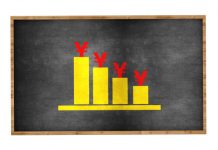China’s National People’s Congress for 2024 and the market response again highlighted how far apart the views of China’s authorities and global investors are on both the current health of the economy and the way to achieve long-term prosperity.
China’s 2024 National People’s Congress met expectations with respect to key policy actions, but disappointed in terms of sentiment – market participants clearly hopeful the new year would bring a more aggressive policy style. As was the case throughout 2023, the market and China’s authorities currently have very different perspectives on the economy’s immediate health and the long-term path to prosperity, with authorities confidence in the dividend from trade and investment ex-housing intact but the market of the belief that housing must again take a leading role in China’s growth story.
According to the 2024 government work report delivered at the NPC, GDP growth of “around 5%” is expected to again be achieved in 2024 after a 5.2% gain in 2023. Year-over-year, direct support from the central government is little changed, 2024’s deficit target of 3.0% the same as 2023.
October’s late revision of the 2023 deficit target to 3.8% will also support activity in 2024, as will an additional RMB1trn in sovereign special bonds – a stop-gap measure to sure-up infrastructure investment while local government funding through land sales is impaired. Still, there is no evidence of authorities believing their support for the economy must be dialled up.
Whereas the growth and fiscal targets are best considered hard targets, authorities 3.0% CPI projection is more a symbol of intent. What the target speaks to is a plan to bolster household employment and incomes through trade and investment and, in time, justify a sustained rebound in consumer perceptions of their family finances and wealth. In doing so, authorities will encourage the use of existing and new capacity and thereby create a supportive environment for profitability, wage growth and consequently domestic inflation.
For consumer views of family finances to fully heal however, further targeted support for housing construction is also necessary. While this began in 2023, 2024 must see a material expansion through additional funding and liquidity being made available for developers and local governments as well as clear direction from the Central Government that their reform process is complete.
A core focus of the housing reforms has been the re-shaping of the construction pipeline to focus on the development of housing for low and middle-income households to ‘live in’ as opposed to product for investors. With interest rates and deposit rates having been cut significantly, an end to uncertainty over developers’ finances should quickly see the investment pipeline refill and investment begin to grow on households’ terms not direct Government support.
The property sector’s healing is likely to take place over 2024 and 2025. In the meantime, there is cause to believe 2023’s consumption momentum can be sustained throughout 2024, with Lunar New Year anecdotes suggesting a growing number of Chinese consumers are increasing their discretionary spend. Highlighting the potential scale of pent-up demand for 2024 and beyond, retail sales have only increased 4% annually the past four years (2020-2023) having grown closer to 10% between 2015 and 2019.
In our view, the above consumer narratives are sustainable trends which can help support GDP growth “around 5%” in both 2024 and 2025. The other foundation is business investment, itself dependent on trade.
Throughout 2023, we detailed at length the strength anticipated then seen in high-tech manufacturing. For the year, fixed asset investment related to chemical products, automobiles and electrical machinery grew by 13%, 19% and 32% respectively. Utilities also grew 23%, and other infrastructure 6%. High-tech manufacturing is unlikely to grow as fast in 2024 and 2025; but now being of similar scale to housing, its contribution to growth will remain large. Importantly, as the new capacity investment is creating comes online, the trade position will benefit, drawing and accumulating income from exports while also reducing lost wealth and income through imports.
This recursive loop between investment and trade and the consequent scaling up of national income is the foundation for Chinese authorities long-run prosperity ambitions. If these gains can be recycled into new jobs and wealth across the economy, not only will they deflate the significance of the nation’s existing debt, but also offer capital to fund sustainable growth in consumption and housing. Income, not debt, is set to remain the focus of China’s authorities, with risks related to the latter expected to resolve themselves as growth persists, and property investment to follow growth elsewhere in the economy.














